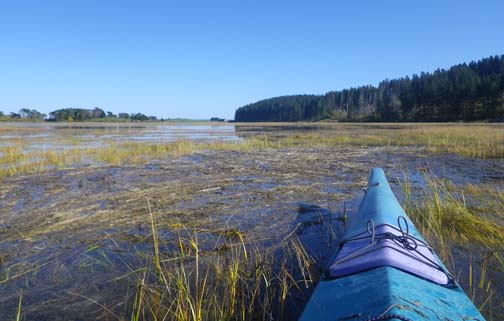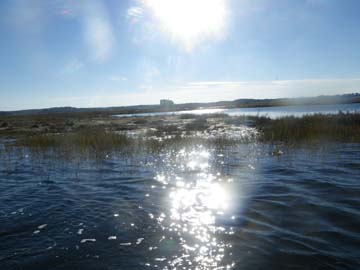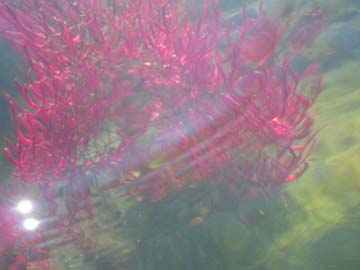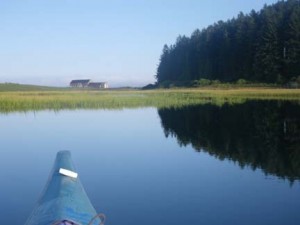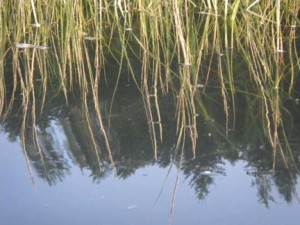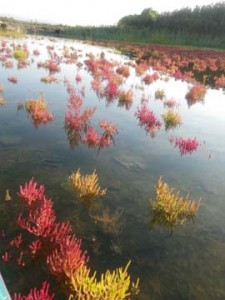- Marsh grass off the northeastern end of Hog (recently renamed Choate) Island.
It is glorious to paddle in the fall “spring tides.” I went out recently three days after the new moon. The marsh was flooded like an inland sea, at 12 feet, unlike the usual nine to ten feet. Instead of having to follow channels, you point your bow and shoot over to the landmark you wish to reach, floating over ditches, boardwalks, marsh, and salt pans. The other advantage is a bigger window of time in which you paddle – three hours on either side of high tide in my case before it’s mud.
Here is a technical description of these unusually high fall tides: “Approximately twice a month, around new moon and full moon when the Sun, Moon and Earth form a line (a condition known as syzygy) the tidal force due to the Sun reinforces that due to the Moon. The tide’s range is then at its maximum: this is called the spring tide, or just springs. It is not named after the season but, like that word, derives from the meaning “jump, burst forth, rise”, as in a natural spring.
The colors are glorious today: the tawny gold of marsh grass, the crinkley maroon of the faded sea lavendar, the bright pink glasswort (better than the New England maple trees in fall!). Wildlife has flown south. Gone are the kingfishers, the yellow legs, the Great egrets. The Great blue heron is one of the last to go. Black ducks fly up and away startled, honking madly. The light breeze rustles the phragmites reeds. On this afternoon, the duck hunter has brought out provisions to his cabin on the inland sea for the upcoming hunting season. He sits on the porch soaking up the sun with his dog.
Unusual high tides will occur at the new moon around the 15th of the month for the next few months. See you on the water and happy fall paddling.
– Tamsin Venn

